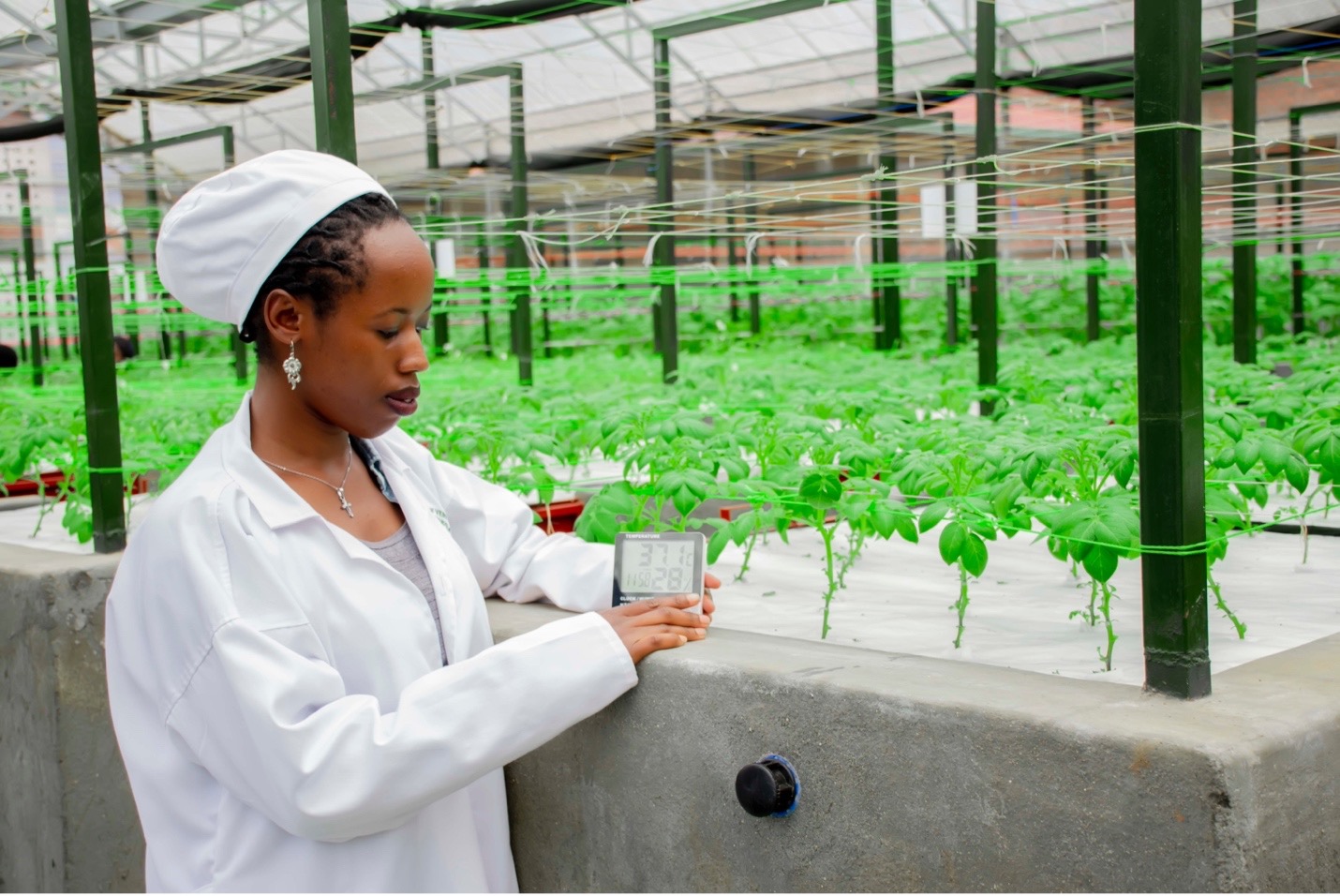Rwandan woman develops an IoT Mobile App to boost agriculture.
Date:

Ms. Clemence Uwamutarambirwa has developed an agricultural solution mobile app ‘Smart Potato Greenhouse Technology’ to address hunger in Musanze district with the aid of sensors to monitor soil quality, humidity, temperature and automate the irrigation process.
The ‘Smart Potato Greenhouse Technology’ is an IoT mobile application that uses interconnected sensors to monitor soil quality and temperature, automates irrigation by pumping water to the greenhouse and through physical sensors deployed in the greenhouse, they send notifications and alerts of the data captured to greenhouse managers wherever they are through a cloud platform.
Ms. Clemence is one of the 25 trainees who benefited from the six months “Internet of Things” training offered by the Catholic University of Rwanda located at Huye and Gisagara Districts with support from UN Women.
The Internet of Things (IoT) is growing exponentially and can become an enormous source of information. IoT has provided new opportunities in different domains however, little attention has been paid to the potential use of IoT in the food safety domain. UN Women Rwanda is seizing the opportunity in collaboration with the Catholic University to support women and girls create job opportunities under the Joint Youth Programme funded by Multi Partner Trust Fund (MPTF)/SIDA.
According to the 2022 national census report, 69% of Rwandan households are engaged in agricultural activities (crop production or animal husbandry). The use of IoT in food supply chains could be one of the promising new areas with applications in precision agriculture, food production and processing.
Clemence’s IoT Applications comes as a solution to farmers to address food security and
sustainability but also to improve the security systems using different sensors like sound sensor, motion sensor and automated digital cameras. For instances, in cases of theft of the devices used in the greenhouse, its sensors detect and take pictures automatically and transmit them to the mobile phones of greenhouse managers immediately.
“Using the internet of things can help farmers to carry out hydroponics which is a type of horticulture and a subset of hydroculture that involves growing plants, usually crops or medicinal plants, without soil, by using water- based mineral nutrient solutions in aqueous solvents.” said Clemence.
With IoT, Clemence hopes to solve the problems caused by climate change in Musanze district but also help green house managers and Catholic University of Rwanda Students for study purposes.
The tool is still under implementation and final phases of testing will start in April 2023.
Evariste Nsabimana, a technician in the greenhouse said “This is a very interesting technology because it helps managers to make a remote monitoring of the greenhouse and efficiently maintain security of our produce. The deployed sensors will regulate temperature and humidity and this will lead to the multiple result of potatoes production not only in Musanze District but in the whole country.”
Today, Clemence is working with seed potato fund (SPF-IKIGEGA), a professional seed trader working and serving local communities to ensure stable and real time availability and accessibility of quality potato seed to farmers through use of smart agriculture like seed multipliers, storage, handling and marketing potato seeds.
